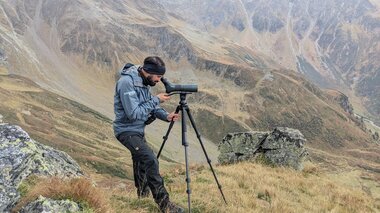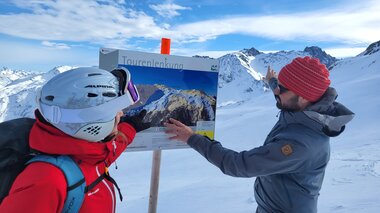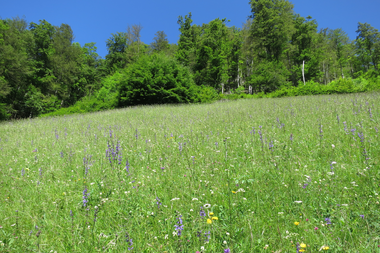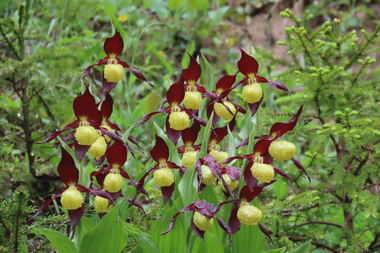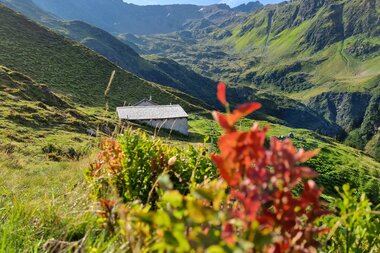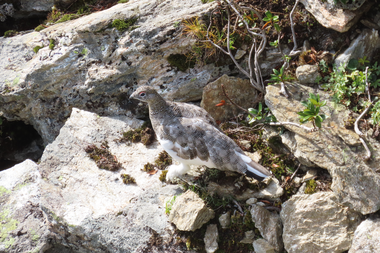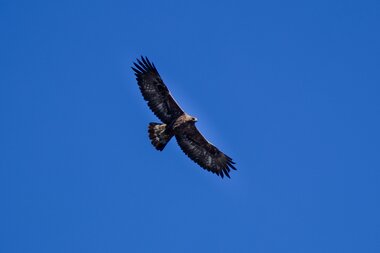A natural area worth protecting
The Natura 2000 protected areas "Verwall" and "Klostertaler Bergwälder"
From steep mountain forests and species-rich rough pastures to impressive moors and extensive alpine meadows - the Klostertal offers an incomparable variety of habitats. No wonder it includes two important European protected areas: the "Klostertaler Bergwälder" and the "Verwall".
In 2003, these areas were designated as the first Natura 2000 protected areas in the Klostertal. Natura 2000 is a Europe-wide network of protected areas that aims to protect endangered and rare species and their habitats and preserve them for future generations. In Vorarlberg there are a total of 39 areas, ranging from the gentle shores of Lake Constance to the peaks of the Verwall, which provide an important habitat for numerous animal and plant species.
Naturschutzverein Verwall-Klostertaler Bergwälder
The Naturschutzverein Verwall-Klostertaler Bergwälder has been committed to the preservation of these valuable areas for over 10 years. The association acts as a central point of contact for municipalities, tourism, hunting, forestry and the population and works to increase knowledge about the Natura 2000 protected areas in the region and promote their acceptance. The association's diverse activities include natural history excursions, voluntary work and projects to preserve habitats and habitats worthy of protection, such as the renaturation of moors. Further information can be found on the association's website and on Instagram and Facebook.
Natura 2000 protected area "Klostertaler Bergwälder"
An imposing and richly structured mountain landscape opens up right at the entrance to the Klostertal. Rugged mountain peaks, steep torrents, spectacular waterfalls and interlocking forests and meadows give the Klostertal its truly unique character. Steep forests with plenty of dead wood and colorful meadows dominate the landscape. The "untidy forests", in which dead trees are sometimes still present in large numbers, offer the best conditions for a variety of highly specialized species.
The "Klostertaler Bergwälder" stretch like a narrow band over 23 km north of the Alfenz from Langen am Arlberg to Bludenz and are home to a wealth of mountain bird species, including 6 different species of woodpecker and rare birds of prey. The forests, which are difficult to access, and the scattered rough pastures are home to many rare species that have already disappeared elsewhere. Almost half of all bird species that breed in Vorarlberg can be found here. And this is despite the fact that this Natura 2000 site only represent a small part of Vorarlberg's natural diversity.
Numerous rare and partly protected species, including colorful orchids, thrive in the flower-rich meadows. The hustle and bustle of insects and other small animals contributes to the liveliness of these meadows. The close interlocking of near-natural forests and extensive meadows creates a particularly rich habitat for lichens, mosses, rare plants and large mammals, which enjoy a pleasant sunbath here in the harsh winter.
Natura 2000 protected area "Verwall"
The Natura 2000 protected area "Verwall forms a striking contrast to the warm-toned mixed deciduous forests on the sunny side. It covers around 120 km², making it the largest protected area in Vorarlberg, larger than four of the six national parks in Austria. The area stretches from Partenen via the rear Silbertal in Montafon to Langen am Arlberg and offers an impressive variety of alpine habitats.
Here you will find the largest larch and stone pine forests in Vorarlberg, numerous moors and lakes, extensive mountain pine and alder bushes, colorful alpine meadows and rugged rock habitats. The mixture of these landscape forms creates a unique habitat in which plants and animals, which are often separated elsewhere, interweave with one another.
A striking feature of the Verwall is the transition from the marginal Alps to the central Alps. This geological and climatic transition is reflected in the rocks and precipitation and contributes to the extraordinary biodiversity of the area.
The remoteness and tranquillity of the Verwall provide ideal protection for numerous endangered bird species such as the rock ptarmigan, golden eagle and peregrine falcon. These species find large, undeveloped retreats here. The peregrine falcon, which swoops down on its prey at speeds of up to 300 kilometers per hour, is considered the fastest bird in the world. The rock ptarmigan, which can move in high snow conditions, and the willow, the "smallest tree in the world", are also native to the area.
Tips for your visit to the protected areas
Vorarlberg is a densely populated federal state and naturally also a popular destination for guests who want to explore and experience our beautiful natural areas on foot, by mountain bike, on skis or snowshoes. The year-round demand for activities in our natural areas is correspondingly high. It is wonderful that nature is so important to us, but at the same time we face the challenge of ensuring peaceful retreats for our wildlife and habitats. The Natura 2000 sites in the Klostertal are such retreats. That is why it is so important that visitors know about the protected area and its species and habitats worthy of protection. After all, everyone can and should contribute to preserving this natural jewel in the long term.
- Visitors to the Natura 2000 site are asked to stay on the paths so as not to disturb the sensitive ground-nesting bird species.
- We also ask mountain bikers to keep to the signposted routes and times so as not to disturb the retreats of the wild animals.
- Please also keep dogs on a lead and refrain from using drones.
Our wild animals will thank you for your consideration and will be seen more often and perhaps even closer.
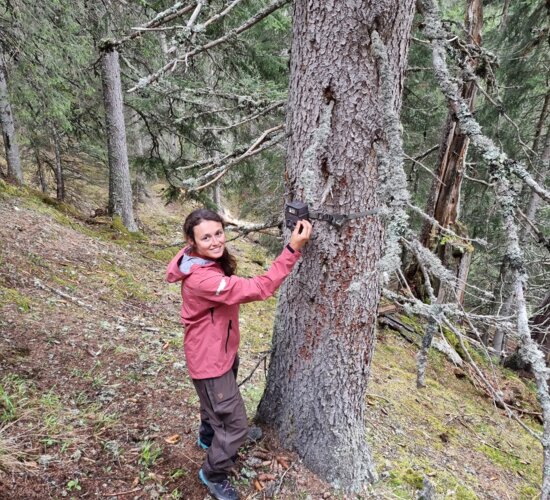
From the day-to-day work of area management
Whether spring, summer, fall or winter - the Verwall-Klostertal Natura 2000 protected area Association is at work for the European protected areas all year round. But what exactly does the management team do?


